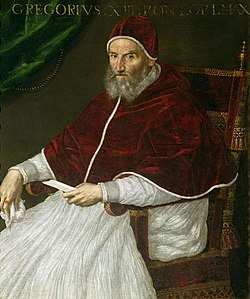 Today is February 29th, the rarest day of the year. As proud Catholics, no doubt everyone here knows that the inclusion of February 29th in the calender every four years (aside from years divisible by 400, where there is no February 29th unless the year is also divisible by 2000 in which case there is) is due to the reforms of Pope Gregory XIII, and is designed to correct for the fact that it takes approximately 365 and 1/4 days for the Sun to fully revolve around the Earth.
Today is February 29th, the rarest day of the year. As proud Catholics, no doubt everyone here knows that the inclusion of February 29th in the calender every four years (aside from years divisible by 400, where there is no February 29th unless the year is also divisible by 2000 in which case there is) is due to the reforms of Pope Gregory XIII, and is designed to correct for the fact that it takes approximately 365 and 1/4 days for the Sun to fully revolve around the Earth.
Catholic countries, being dutiful subjects of Rome, all adopted the Gregorian calender immediately. Non-Catholic countries were understandably more skeptical, particularly as the new calender involved skipping ten days ahead. For those already predisposed to see something sinister in the actions of Rome, the idea that the Papacy was trying to “steal” ten days from the common folk must have seemed like a real outrage. Eventually, though, the benefits of the Catholic calender broke down people’s resistance, and one by one the new calender was adopted. The longest hold-outs were Eastern Orthodox countries. Russia only adopted the calender after the Bolshevik revolution in 1917 and Greece was the last nation to adopt the new calender in 1923 (The Eastern Churches themselves never adopted the Gregorian calender).
Pope Gregory’s bull establishing the new calender, Inter Gravissimas, can be found here.
















